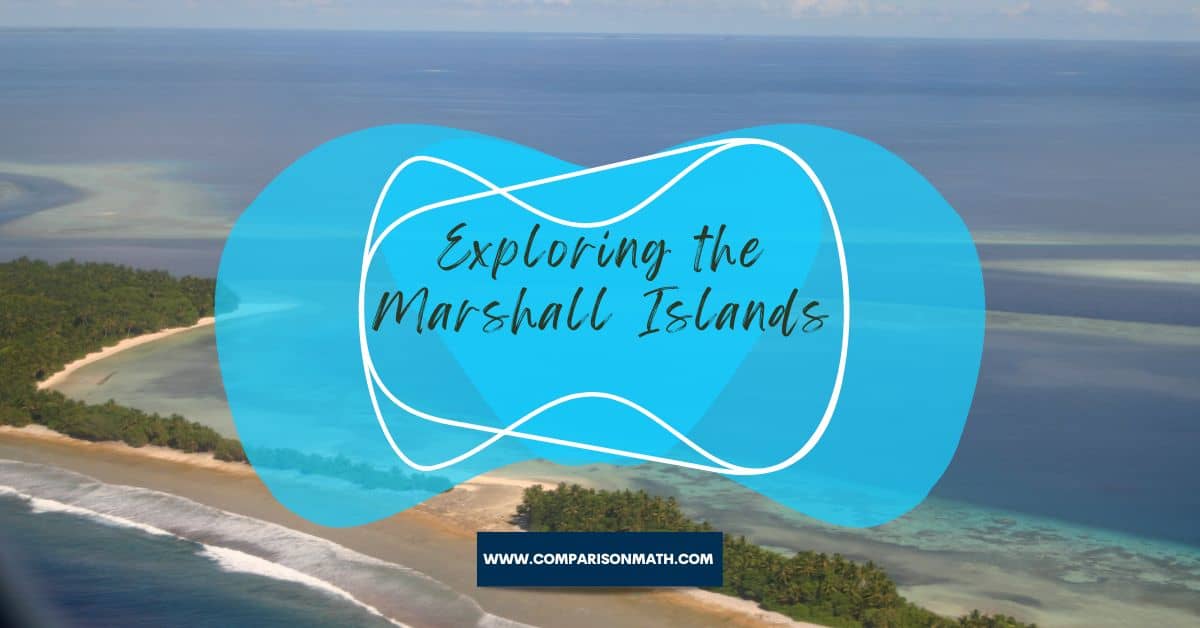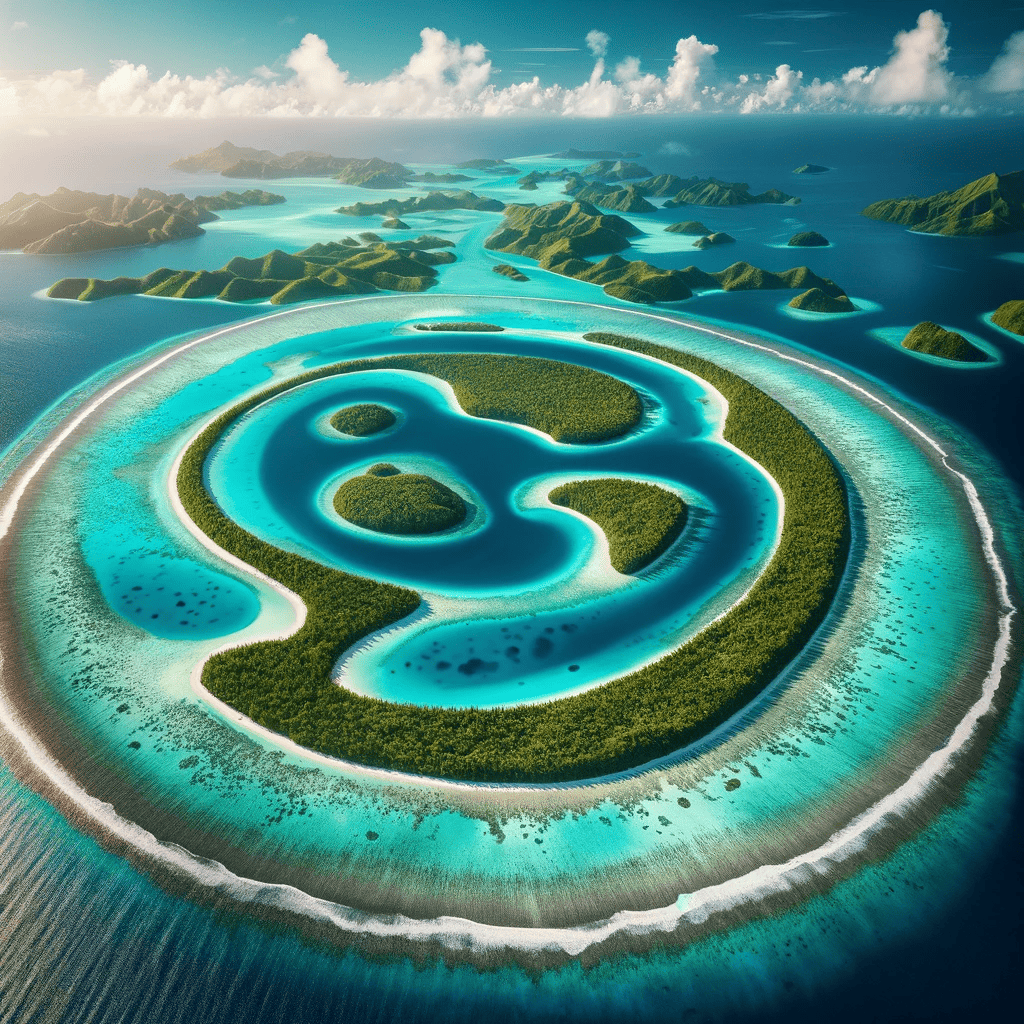Physical Address
304 North Cardinal St.
Dorchester Center, MA 02124
Physical Address
304 North Cardinal St.
Dorchester Center, MA 02124

The Marshall Islands, a nation of breathtaking atolls and rich cultural heritage, is a destination that beckons with its unique charm and intriguing history. Nestled in the central Pacific Ocean, these islands offer a blend of serene beauty, compelling history, and vibrant culture. This blog post will take you on an exploratory journey through the diverse aspects of the Marshall Islands, from its enchanting geography and deep-rooted history to its rich cultural tapestry and environmental challenges.
The Marshall Islands, formally known as the Republic of the Marshall Islands, are a picturesque cluster of atolls and islands that form part of the larger island group of Micronesia. The country consists of 29 atolls and 5 individual islands, amounting to over 1,000 individual islets and covering approximately 181 square kilometres of land. Each atoll is a ring-shaped coral reef, enclosing a lagoon, presenting a stunning aerial view that captivates visitors and locals alike.
Key Geographical Facts:
The Marshall Islands are scattered over 750,000 square miles of the ocean, making them one of the most extensive island chains in the world. The two main atoll chains are the Ratak (Sunrise) and the Ralik (Sunset) chains, each with distinctive features and breathtaking natural beauty.

The islands experience a tropical climate, marked by two distinct seasons: the wet season from May to November and the dry season from December to April. The average temperature hovers around 28°C (82°F), creating an ideal environment for a variety of flora and fauna.
Climate Overview:
The Marshall Islands are home to diverse marine life and vibrant coral reefs, making them a paradise for snorkelers and divers. The crystal-clear waters and abundant sea life, including manta rays, sharks, and an array of tropical fish, offer an underwater spectacle that is unmatched. The islands’ natural beauty extends to the lush vegetation on land, with coconut palms and breadfruit trees dotting the landscape.
The history of the Marshall Islands is as rich and deep as its oceanic surroundings. The islands were first settled around the 2nd millennium BCE by Micronesian navigators. These early settlers developed a distinct cultural identity, with a complex matrilineal clan system and a rich oral tradition that preserved myths, legends, and navigation techniques.
Over the centuries, the islands saw influences from various cultures due to their strategic location. The Spanish were the first Europeans to sight the islands in the 16th century, but it was not until the 19th century that European influence became significant, with the arrival of British and German traders and missionaries.
Cultural Heritage Highlights:
The 20th century was a tumultuous period for the Marshall Islands, especially during and after World War II. After the war, the islands came under the control of the United States as part of the Trust Territory of the Pacific Islands. This period saw significant changes, including the testing of nuclear weapons on Bikini and Enewetak atolls, leaving a lasting impact on the environment and the health of the islanders.
In 1986, the Marshall Islands gained independence through the Compact of Free Association with the United States. This agreement marked a new chapter in the nation’s history, providing it with sovereignty while maintaining strong economic and defence ties with the U.S.
Modern Political Milestones:
In the next section, we will explore the rich cultural tapestry of the Marshall Islands, including its traditions, arts, and festivals.
The Marshallese culture is a vibrant tapestry woven from the threads of tradition, community, and the sea. Central to this culture is the concept of “kajur,” which emphasizes communal living, sharing, and respect for elders. Families live in close-knit communities where traditional customs are passed down through generations.
Fishing and navigation are not just means of sustenance but also integral parts of the cultural identity. The Marshallese are renowned for their extraordinary navigational skills, using traditional methods based on the stars, ocean swells, and wind patterns.
Cultural Aspects:
Arts and music are pivotal in Marshallese culture, with a rich heritage of weaving, woodcarving, and tattooing. Woven mats, baskets, and hats made from pandanus leaves are common, showcasing intricate patterns and craftsmanship.
Music and dance are also central to the Marshallese way of life, often performed during community events and festivals. Traditional dances are accompanied by songs that tell stories of history, legends, and daily life. Instruments like the “ukelele” and “drums” are commonly used.
The Marshallese calendar is dotted with festivals that celebrate various aspects of their culture. One of the most significant is “Manit Day,” a cultural festival that showcases traditional dancing, singing, and Marshallese crafts.
Art and Music Highlights:
Next, we will delve into the intriguing world of tourism in the Marshall Islands, highlighting must-visit destinations and essential travel tips.
The Marshall Islands, with their pristine beauty and rich history, offer a plethora of destinations for travellers seeking both tranquillity and adventure. Here are some must-visit spots:
When planning a trip to the Marshall Islands, consider the following tips:
Travel Checklist:
Remember, while exploring, respect the local customs and environment to ensure a sustainable and enriching experience for both visitors and locals.
In the following section, we will explore the environmental challenges facing the Marshall Islands and the ongoing conservation efforts.
The Marshall Islands, like many low-lying island nations, face significant threats from climate change. Rising sea levels, increased storm frequency, and coral bleaching pose existential risks to these islands. The nation is at the forefront of global climate change discussions, advocating for stronger actions to mitigate these effects.
Key Environmental Challenges:
The Marshallese government, along with international organizations, is working on various initiatives to combat these challenges. Efforts include coastal reinforcement projects, sustainable fishing practices, and the promotion of renewable energy to reduce carbon footprints.
The legacy of nuclear testing in the Marshall Islands during the mid-20th century continues to impact the environment and the health of its inhabitants. Bikini and Enewetak atolls, in particular, were sites of extensive nuclear tests, leading to long-lasting radioactive contamination.
The Marshallese people have faced significant health issues as a result of this legacy. In response, there have been continuous efforts for nuclear justice, including compensation claims and demands for greater recognition of the impacts.
Conservation and Rehabilitation Efforts:
The environmental narrative of the Marshall Islands is a poignant reminder of the delicate balance between human activities and natural ecosystems, and the need for responsible global stewardship.
Next, we will look at the economy of the Marshall Islands, exploring its main sectors and prospects.
The economy of the Marshall Islands is characterized by a mix of traditional and modern elements, heavily reliant on external aid, agriculture, and the service sector. Despite its limited natural resources, the nation has developed various economic activities to sustain its population.
Key Economic Sectors:
The country also benefits from the Compact of Free Association with the United States, receiving financial assistance and support in healthcare, education, and infrastructure.
Looking ahead, the Marshall Islands faces both challenges and opportunities in its economic development. Climate change poses a significant threat, potentially impacting fisheries and agriculture, as well as tourism. However, there are also growth opportunities:
The Marshall Islands’ economy, with its unique challenges and opportunities, reflects the resilience and adaptability of its people in the face of changing global dynamics.
The Marshall Islands, a nation of stunning atolls and rich cultural heritage, presents a world filled with contrasts – from its breathtaking natural beauty to its complex history and the resilience of its people in the face of environmental challenges. As we have explored in this blog post, these islands are much more than just picturesque landscapes; they are a testament to the endurance and spirit of the Marshallese people.
From the ancient origins of its inhabitants, marked by remarkable navigational skills and deep-rooted traditions, to the impact of World War II and nuclear testing, the history of the Marshall Islands is both compelling and poignant. Today, the country stands as a symbol of both vulnerability and strength, particularly in the face of climate change and its environmental legacies.
The economy of the Marshall Islands, while facing challenges, also shows signs of potential growth and diversification. The blend of traditional practices with modern advancements offers a unique perspective on sustainable development and resilience.
In conclusion, the Marshall Islands offer not just a travel destination but a profound story of a people and a place navigating the complexities of history, culture, and environmental challenges. It’s a story that invites us to reflect on our role in shaping a sustainable and respectful relationship with our planet.
As you conclude our journey through the enchanting Marshall Islands, we invite you to continue exploring with us. Don’t miss our exclusive travel blog post that delves deeper into the hidden gems, local secrets, and travel tips that will make your visit to these breathtaking islands truly unforgettable.
The best time to visit is during the dry season, from December to April when the weather is more favorable for outdoor activities.
Yes, Bikini Atoll is open to tourists for wreck diving, but it’s essential to be aware of and follow safety guidelines due to the historical nuclear testing.
Traditional dishes include seafood-based meals like “ikan” (grilled fish) and “bwiro” (fermented breadfruit wrapped in banana leaves).